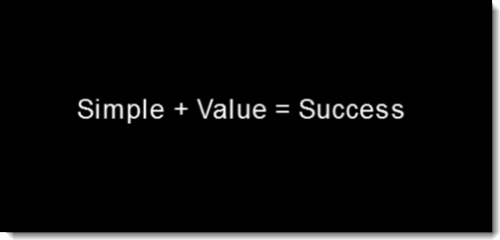Tips for Online Business Success
12th Apr 2013 by

As a store owner you ask yourself a multitude of very important questions all the time and most of them deal with increasing sales and growing revenue. When I talk with store owners, I like to ask about how they’re currently reaching their customers in the technological world we live in today. Can the staff help out more and do you find any time to work on the business instead of in the business? I ask these questions because I’m sure the accountant and bankers, along with all the other so-called experts, are asking fifty other kinds of questions where it’s all about the bottom line.
Most small business owners wear many hats and are forced (for lack of a better word) to do many things they dislike which take them away from working with their customers. They’re the bookkeeper, the accountant, the banker, the rainmaker, the worrywart, the IT guy, and the marketing person all in one. It’s hard to ignore these things because after all, they are the owner, but it doesn’t mean they’re good at those tasks or like wearing any of those hats.
I also want to know what the business owner is good at and why they started the business in the first place because the follow-up questions are usually answered with enthusiasm and excitement. I like to hear the owner talk about the message they want their customers to hear when promoting their products. I want to help them.
At the end of every conversation I’ve ever had with business owners I can honestly say that all of them just want things simple and easy. Not a single one has every told me, “I want the next phase of our business to be as difficult and time consuming as possible.”
Here are a few things I’ve learned over the years that I’ve been able to pass along to the hundreds of business owners I’ve had the pleasure of speaking with.
Fluff Sucks / Keep it Simple
When I ask a question I always want a straight answer (if there is one). No fluff please. Just give it to me straight. So when I’m asked a question, I assume you are like me and I answer the question with no fluffy nonsense - just straight, simple, easy to understand answers. I also assume that your customers want the same thing when working with you and your website, so here’s what you should do – give it to them!
I don’t want fancy nonsense popping up all over the place that want me to join the mailing list and receive 10% off … I don’t want banners following me down the page ... I don’t want ten clicks to get to what I’m trying to buy. I just want to learn what you have say about the products.
Keep it simple! I want to see how you present it and show me how to use it, and then I want to be able to check out securely and have it shipped to me in a way that shows you care. Good online retailers know how to ship and it’s often a forgotten item because it’s not very glamorous.
Price vs. Value
This is a biggie for me and a huge mistake if you decide everything based on price - even more of a mistake if you compete solely on price. Price is not all that matters—what is important, at least to people like me, is value. Value takes into account training, support, experience, and the intrinsic joy of using or owning one of the best product or services out there.
Modern Retail falls into this category all day long. We have an outstanding staff and I’m sure we are not the cheapest provider out there, but we’re not the most expensive either - and we offer tremendous VALUE. That is important and there’s a “sleep factor” element that goes with this along with being happy with a product or service even though you may have paid a little more then everyone else. Price vs. Value should be taken into consideration.
Marketing Boils Down to Providing Unique Value for the Customer
People, in general, are usually very confused about marketing and what it really means. Oh sure, they’ve heard the term and can probably recite a textbook definition of the word, but do they really understand it when it comes to the Internet? Nope. Take a look at the two-by-two matrix pictured below.
The vertical axis measures how your product differs from the competition. It doesn’t matter what the product is. The horizontal axis measures the value of your product and how much demand there is for it.
Bottom right: your product is valuable but its not unique—you’ll have to compete on price. You can think of blue jeans as an example here.
Top left: unique but not valuable—you’ll own a market that doesn’t exist and you probably don’t have a huge budget to create one.
Bottom left: Your products are not unique and not valuable—you’re in the wrong business and are about to go out of business. Think of your local record shops right here as a good example no longer unique with zero value.
Top right: unique and valuable—this is where you make margin and money. Ugg boots is a good example of unique and valuable because at the time they were the first to create a market and make history that swept the world with a new kind of footwear. Look at Ugg today! History is riddled with success stories like Ugg boots, the iPod, Blue Jeans, etc. . .
In the end, changing a few minds every day is an easy and reachable goal. Every customer you meet in your store or who places an order on your website is a challenge to do your very best to turn them into a repeat customer.

